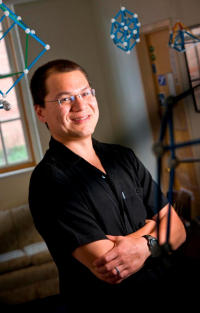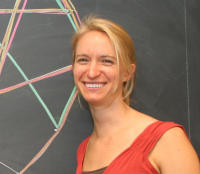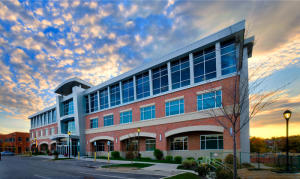
|
The Mathematical Association of America Maryland-District of Columbia-Virginia Section |
- Home
- History
- Main History Page
- Section History Document
- List of Past Officers
- Charter Members
- African-American Participation
- Stories from Section Members
- Section NExT Fellows
- Obituaries
- Smith Award Recipients
- Christensen Award Recipients
- Meritorious Service Award Recipients
- Undergraduate Award Winners
- Meeting Archive
- Past Meetings
- Talk Archive
- Old Section NExT Programs
- Newsletter Archive
- Meeting Minutes Archive
- Miscellaneous Documents
- Meetings
- Minutes
- Fall 2024 Executive
- Fall 2024 Membership
- Spring 2024 Executive
- Spring 2024 Membership
- Fall 2023 Executive
- Fall 2023 Membership
- Spring 2023 Executive
- Spring 2023 Membership
- Fall 2022 Executive
- Fall 2022 Membership
- Spring 2022 Executive
- Spring 2022 Membership
- Fall 2021 Executive
- Fall 2021 Membership
- Spring 2021 Executive
- Spring 2021 Membership
- Fall 2020 Executive
- Fall 2020 Membership
- Fall 2019 Executive
- Fall 2019 Membership
- Spring 2019 Executive
- Spring 2019 Membership
- Fall 2018 Executive
- Fall 2018 Membership
- Spring 2018 Executive
- Spring 2018 Membership
- Fall 2017 Executive
- Fall 2017 Membership
- Spring 2017 Executive
- Spring 2017 Membership
- Minutes Archive
- Newsletters
- Section NExT
- Awards
- Students
- Links
- Search
Spring 2012 Meeting at Stevenson University
David Kung from St. Mary's College of Maryland gave both the
Friday workshop and Saturday afternoon address. The workshop was intitled
Closer to Fair: Social Justice in Mathematics, Mathematics
for Social Justice and his Saturday afternoon address was
How Math Made Modern Music We also had our undergraduate research conference featuring undergraduate talks as well as our annuual Jeopardy competition and The Radical Dash. For more information please see The Spring Undergraduate Student Conference page.
During the meeting of the general membership we elected the following
new and returning section officers.
The Nomination Committee was Dipa Sarkar-Dey (Chair), Daniel Joseph, Ann Stewart,
and Eve Torrence.
Invited Addresses
David KungSt. Mary’s College of MarylandWorkshop: Closer to Fair: Social Justice in Mathematics, Mathematics for Social Justice Abstract: The world is an unfair, unjust place. What can math teachers do about it? This talk will focus on two specific ways mathematicians have worked to address issues of social justice both in our classrooms and in our world. The first half of the workshop will focus on the inequalities that pervade mathematics and science classrooms and what people have done to help level the playing field, especially in college math classrooms. In the second half, we will look at how math teachers are using innovative curricula to raise awareness of social justice issues while simultaneously teaching math content. These courses ask students to use the tools of mathematics to study, understand, and even address issues ranging from economic inequity to environmental impacts. Sample classroom activities will illustrate the types of content that might replace the algebra-intensive curriculum for many humanities students.
Invited Address: How Math Made Modern Music
Abstract: The scale used by 20th century classical musicians is strikingly different from that used in Bach's time. In fact, over the past 500 years, a wide variety of scales have permeated Western music. Amazingly, none of them was "in tune"! In fact, in some sense, no piano is ever in tune. The reason for this is purely mathematical. Starting with a single vibrating string, we'll use some physics and some advanced mathematics to make sense of the various sounds a violin can make. Add to the mix a little music theory and some basic arithmetic, and we'll be able to construct several different scales and see what's "wrong" with each one. Finally, by constructing the modern scale, we'll be able to answer the question posed in the title. Throughout the talk, these concepts will be illuminated with excerpts played on the violin, including passages from Bach, Mendelssohn, and a few more modern composers. Biographical Sketch: Dave Kung fell in love with both mathematics and music at a very early age. More successful with one than the other, he completed three degrees from the University of Wisconsin - Madison, none in music, before joining the faculty at St. Mary's College of Maryland. Now chair of the Mathematics and Computer Science Department, he still enjoys playing violin with students and in the local community orchestra. He has authored a variety of articles on topics in harmonic analysis and mathematics education, and is the recipient of numerous awards including the 2006 Teaching Award from the MD/VA/DC section of the MAA. He is co-writing a book about college math teaching entitled, "What Could They Possibly Be Thinking? Understanding Your College Math Students." Peggy Aldrich KidwellSmithsonian InstituteInvited Address: Mathematical Recreations and the History of American Mathematics Abstract: A museum curator sees objects as part of stories. Over the past few years, I have been working to place mathematical recreations within the larger context of the history of American mathematics and of the history more generally. The stories of three recreations first produced in the United States in the nineteenth century - word problems posed in journals, the Chinese tangram, and the fifteen puzzle - suggest the enduring influence of puzzles and reveal aspects of American mathematical practice and mathematical communities. Biographical Sketch: Peggy Aldrich Kidwell is the Curator of Mathematics at the Smithsonian's National Museum of American History. In this capacity, she watches over a collection of geometric models, calculating machines, slide rules, cash registers, and miscellaneous computers. Her PhD. in history of science is from Yale University, and she has published extensively on the history of mathematical instruments and mathematics education. 
Alissa CransLoyola MarymountInvited Address: Cracking the Cubic: Cardano, Controversy, and Creasing Abstract: We are all familiar with the solution to a general quadratic equation-some of us even learn songs or mnemonics in school to help us remember the famous formula. But have you heard about analogous formulas for the cubic, quartic, or quintic equations? It turns out that the solution of the cubic didn't become familiar to mathematicians quite so easily! There’s a real story here, filled with challenges, drama, and controversy! After hearing this tale and learning a bit about the solution, we will see how the Italian mathematician Margherita Beloch solved the cubic using origami in the 1930's. Biographical Sketch: Alissa S. Crans earned her B.S. in mathematics from the University of Redlands in 1999 and her Ph.D. in mathematics from the University of California at Riverside in 2004, under the guidance of John Baez. She is currently an Associate Professor of mathematics at Loyola Marymount University and has held positions at Pomona College, The Ohio State University, and the University of Chicago. Alissa's research is in the field of higher-dimensional algebra and her current work, funded by an NSA Young Investigator Grant, involves categorifying algebraic structures called quandles with the goal of defining new knot and knotted surface invariants. She is also interested in the connections between mathematics and music, and enjoys playing the clarinet with the Santa Monica College wind ensemble. Alissa is extremely active in helping students increase their appreciation and enthusiasm for mathematics through co-organizing the Pacific Coast Undergraduate Mathematics Conference together with Naiomi Cameron and Kendra Killpatrick, and her mentoring of young women in the Summer Mathematics Program (SMP) at Carleton College, the EDGE program, the Summer Program for Women in Mathematics at George Washington University, the Southern California Women in Mathematics Symposium, and the Career Mentoring Workshop. In addition, Alissa was an invited speaker at the MAA Spring Sectional Meeting of the So Cal/Nevada Section and the keynote speaker at the University of Oklahoma Math Day and the UCSD Undergraduate Math Day. She is a recipient of the 2011 Merten M. Hasse Prize for expository writing and the Henry L. Alder Award for distinguished teaching. |
Copyright © 2012 - The Mathematical Association of America
Please send comments, suggestions, or corrections for this page to Brian Heinold at heinold@msmary.edu
Last Modified: 06/15/2012 - 12:10pm
 The Spring 2012 Meeting of the MD-DC-VA section of the MAA
was held on April 13-14, 2012 at
The Spring 2012 Meeting of the MD-DC-VA section of the MAA
was held on April 13-14, 2012 at